6 Best Image Recognition Tools in 2025
Explore the top six image recognition tools and software that leverage AI and machine learning to identify objects, people, and patterns in images. This blog highlights key features and use cases, from cloud-based platforms to open-source solutions for businesses and developers.
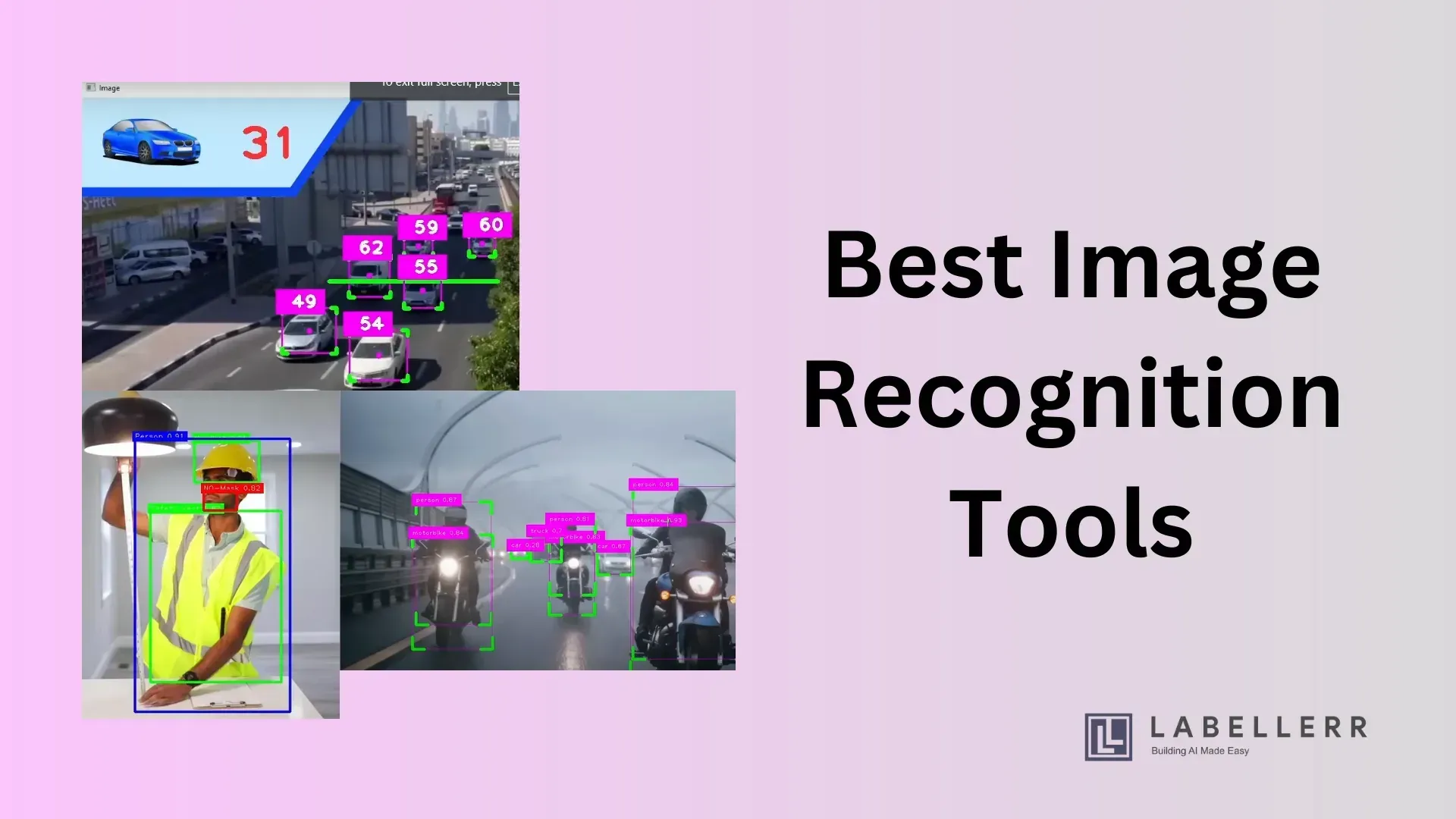
Introduction
We’ve all been there, trying to sort through thousands of images on our devices or struggling to find the right image online.
It's frustrating and time-consuming. Isn't it?
What if you could effortlessly automate tedious tasks, enhance security, or improve customer experiences?
With the latest advancements in image recognition technology, this is no longer science fiction—it's reality.
Today, many businesses worldwide are leveraging image recognition technology to boost business efficiency, accuracy, and customer satisfaction with advanced visual data processing.
In fact, the global image recognition market was valued at $43.60 billion in 2025. It is projected to reach $178.13 billion in 2032, with a compound annual growth rate (CAGR) of 17.1% during the forecast period., reflecting its increasing importance across various sectors.
Whether you're a tech company developing cutting-edge AI models, a healthcare provider looking to improve diagnostics, or a marketer aiming to understand consumer behavior better, the right image recognition tool can make all the difference.
With so many options available, choosing the right tool for your needs is not a piece of cake.
But don’t worry—we’ve got you covered.
With the help of some of the industry’s seasoned tech experts, we’ve compiled the best image recognition tools.
This guide also includes information about how much each tool costs, key features, pros, cons, and G2 reviews so you can choose one that meets your unique needs and goals.
But first thing first.
Table of Contents
- Introduction
- What is Image Recognition?
- What Are Image Recognition Tools?
- Labellerr
- Lenso ai
- Google Vision AI
- Amazon Rekognition
- Imagga
- Clarifai
- Azure AI Vision
- Conclusion
- Frequently Asked Questions
What is Image Recognition?
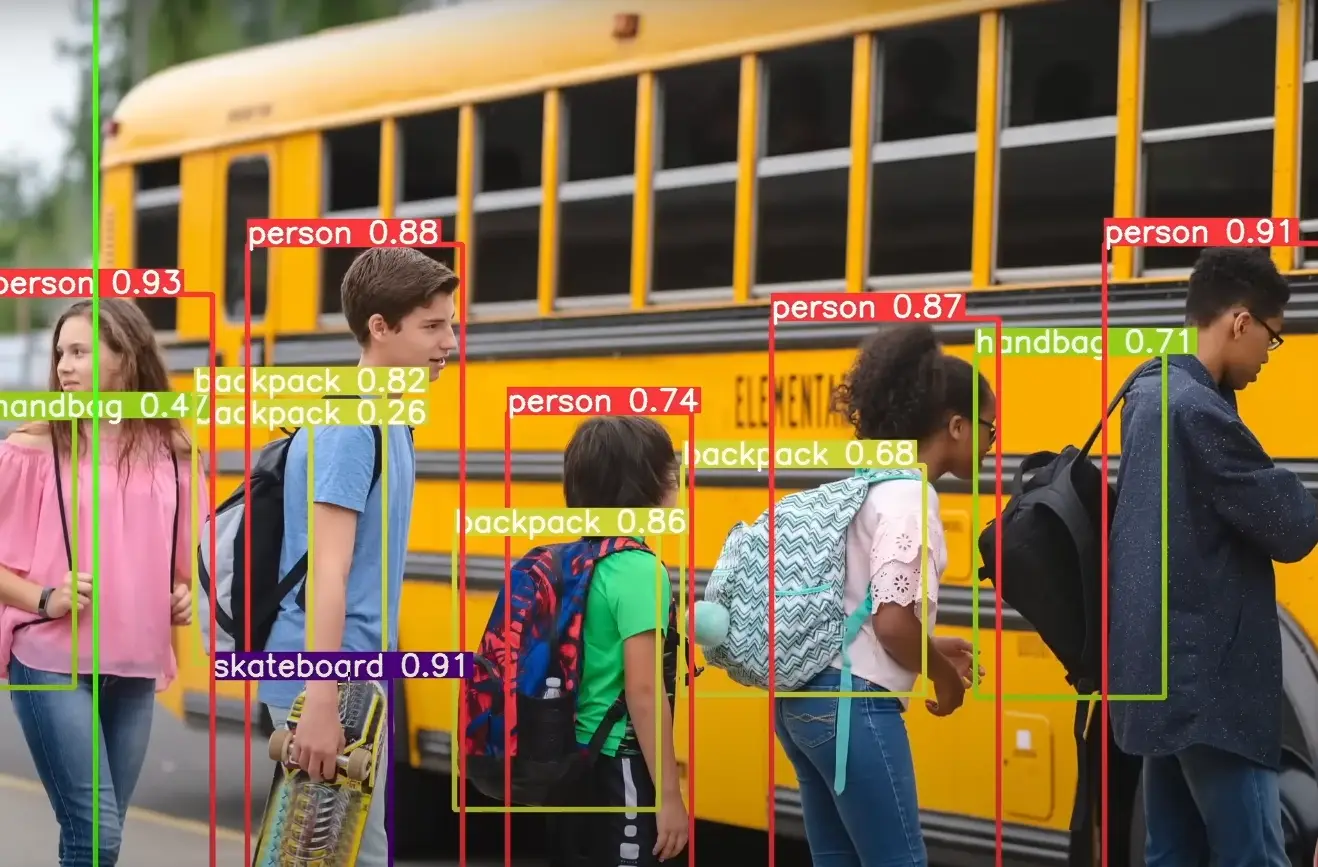
In a nutshell, image recognition is a modern technology that allows computers to identify and understand images.
For example, if you show a computer a picture of a cat, image recognition helps it figure out that it’s indeed a cat, not a dog or a car.
This technology can recognize much more than just basic objects. For instance, they can identify faces, read text from images, and even understand complex scenes, like a crowded street or a sports game.
Basically, image recognition is part of computer vision, a field within artificial intelligence (AI).
It relies on algorithms that interpret the content of an image.
These algorithms range in complexity, from basic ones that recognize simple shapes to advanced deep learning models that can accurately identify specific objects, faces, scenes, or activities.
Here are some key technologies and techniques used in image recognition:
- Convolutional Neural Networks (CNNs)
- Feature Extraction
- Transfer Learning
- Image Preprocessing
- Object Detection Algorithms
- Semantic Segmentation
- Generative Adversarial Networks (GANs)
- Recurrent Neural Networks (RNNs)
- Attention Mechanisms
Today’s advanced technologies, like facial recognition, driverless cars, and real-time object detection, rely on image recognition, which is powered by machine learning.
What Are Image Recognition Tools?

Image recognition tools refer to software systems or applications that employ machine learning and computer vision methods to recognize and categorize objects, patterns, text, and actions within digital images.
These tools can process different types of visual input, such as photos, videos, and live camera feeds, and interpret what’s in them using smart algorithms.
Here’s how it works:
- Extracting Pixel Features: Breaking down an image into pixel-level details.
- Preparing Labeled Images: Using labeled examples to teach the model.
- Training the Model: Learning from examples to recognize patterns.
- Recognizing New Images: Identifying and labeling new images based on training.
For example, if you run an e-commerce platform that sells various products. You use an image recognition tool to help customers find what they’re looking for.
This tool can analyze photos of products, like shoes, shirts, or gadgets. It looks at many pictures of these items to understand their patterns, colors, and shapes.
As you now understand image recognition tools and their importance, let's explore the best image recognition tools available.
Compare and choose one that best meets your needs, goals and budget.
Here's the list:
1. Labellerr

Labellerr is an AI-powered image annotation tool that uses a smart-feedback tool that helps AI-first organizations develop computer vision AI to bring automation to their data pipeline.
It offers a range of annotation types, including
- Bounding boxes
- Polygons
- Automated object detection
- Automated semantic segmentation
Moreover, it has built-in quality control features to ensure accurate annotations.
One of the few annotation tools that got mentioned in the IBM Research paper submitted at NeurIPS 2020 was published in Journal of Machine Learning Research.
Here's a breakdown of its key features, reviews, and pricing:
Pros:
- Feature-rich Segmentation: Perform faster segmentation with pixel perfection. Drag polygon and auto-bordering features prevent overlapping adjacent objects.
- Auto-labeling: Accelerate use cases with semantic segmentation using features like SAM and active learning.
- Professional Annotation Team: Handle large data volumes with fast turnaround times.
- Custom SLA: Starting from 24 hours for batch completion.
- 24/7 Tool Support: Available for the Enterprise Plan.
- Robust QA Process: Set up QA processes that include agreement between annotators, comparison based on ground truth and IOU metrics, model-assisted QA, generative AI-powered QA, and sample visual quality assurance.
- Dedicated Account Manager: Manage daily/weekly output efficiently.
- Data Privacy and Security Compliance: Comply with HIPAA and GDPR regulations.
- Multi-tier Pricing: Options based on quality measurement. The default QC process includes 1 round of annotation and 1 round of QC, customizable to match the expected output, timeline, and budget.
Cons:
- Limited Format Support: This does not currently support point cloud and 3D data formats.
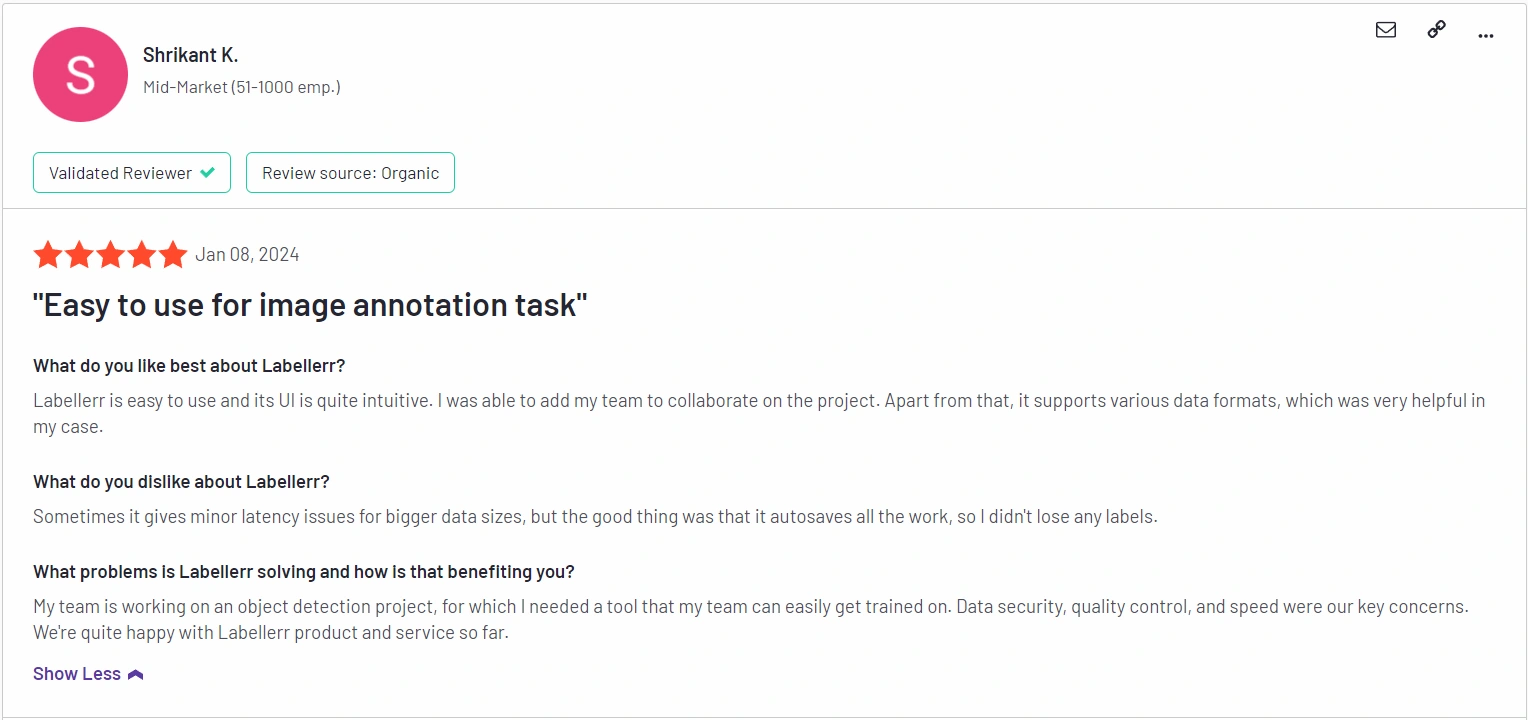
G2 Review : 4.8/5 (link to customer reviews)
Pricing:
- Pro Plan: Starts at $499 per month for 10-user access with 50,000 data credits included. You can buy extra data credits for $0.01 each and add more users for $29 each.
- Enterprise Plan: Offers professional services, including tool customization and ML consultancy.
Watch the following video to experience Labellerr’s cutting-edge Label Data feature in action.
2. Lenso.ai
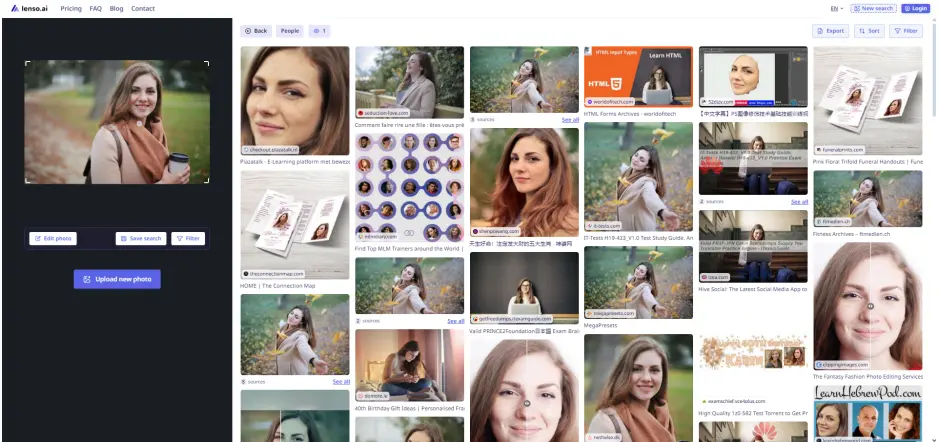
Lenso.ai is an AI-powered image search tool that lets users perform reverse image searches to find people, places, duplicates, similar images, and related images.
It offers both image-based and text-based search options, organizing results into easy-to-navigate categories.
Top Features:
- Reverse image search with organized categories
- Sorting options (best/worst match, newest/oldest, random)
- Diversified searches for broader results
- Domain-specific and text-based filtering
- Email alerts for new image matches
Pros:
- Easy-to-use interface
- Versatile search options
- Organized results for better navigation
- Customizable alerts keep users updated
Cons:
- May require a learning curve for using advanced filters
- Limited free features without a subscription
Pricing:
Lenso.ai offers three plans:
- Starter: $29.99/month
- Unlimited searches, domain filters, collections, 10 source links/month, alerts (coming soon)
- Professional: $59.99/month
- All Starter features, 50 source links/month, CSV export, ad-free search
- Developer: $199.99/month
- All Professional features, 5000 source links/month, API access (coming soon)
3. Google Vision AI
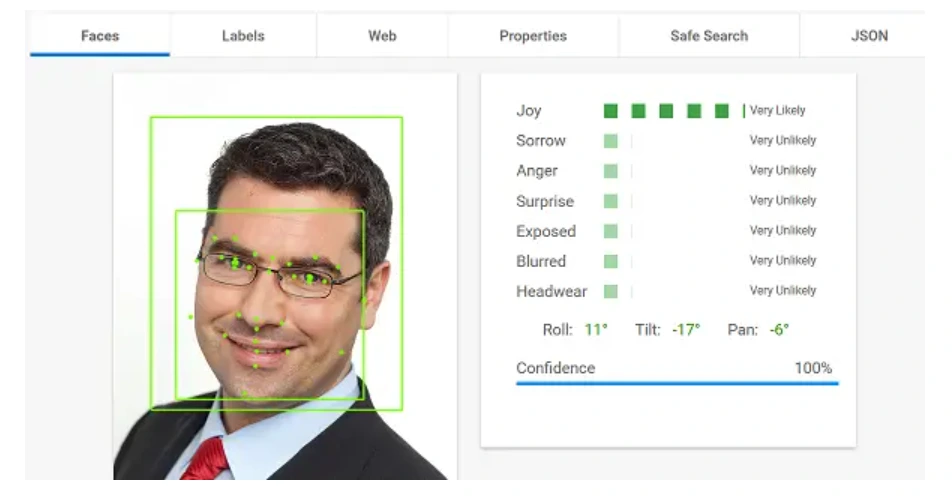
Google Vision AI is an image recognition tool that helps identify and understand images.
It allows users to either create their image models or use ones already made by Google.
This tool is great for analyzing pictures and figuring out what's in them.
You can use Google Vision AI to categorize and store lots of images, check the quality of images, and even search for products easily.
In addition, the software assigns labels to images, sorts similar objects and faces, and helps you see how visible your image is on Safe Search.
Many companies use Google Vision AI for different purposes, like finding products and checking the quality of images.
It's also great for reverse image searches. You upload a picture, and it finds websites and similar images for you.
Google Cloud Vision API is a part of Google Vision AI. It uses machine learning and neural networks to understand the content of images.
When you send a picture to the API, it breaks it down into its parts, like pixels, and considers things like brightness and location.
This technology is smart and can recognize objects, text, and faces in images.
It can even tell you about faces in pictures, like their expressions, which is useful for security.
Key Features:
- Label Detection
- Optical Character Recognition (OCR)
- Face Detection
- Safe Search Detection
Pros:
- Google's Expertise
It's accurate in image recognition, leveraging Google's experience in AI.
- Cloud Integration
It works well with other Google Cloud services, making it accessible for businesses.
- Versatility
It supports various image tasks, from checking content to extracting image information.
Cons:
- Cost
While the first 1,000 requests per month are free, heavy users might have to pay.
- Complexity
It might seem a bit complicated for those new to cloud services, but Google offers support.
- Data Privacy
Users need to be careful with sensitive images, considering data privacy and regulations.
Pricing:
- The first 1000 units used each month are free, units 1001 to 5,000,000 are priced as marked in the Standard Pricing.
- New customers get $300 in free credits to spend on Vision API.
Check out the pricing details here.
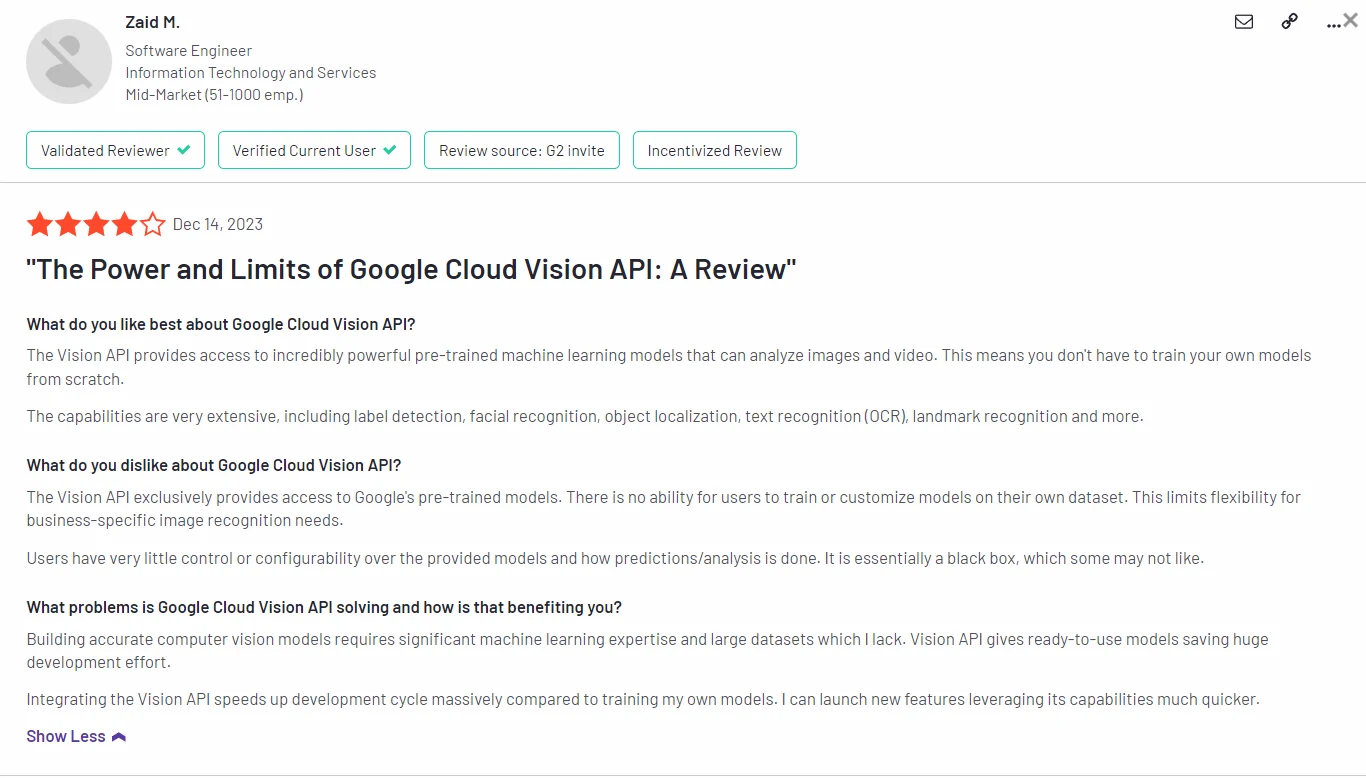
G2 Review : 4.4/5 (link to customer reviews)
4. Amazon Rekognition

Amazon Rekognition is an image recognition tool that can understand and recognize things like landscapes, objects, and faces in videos and pictures.
You can also use it to search and compare faces.
It uses a neural network, which helps it spot and categorize different things in pictures.
For example, if you want to find pictures related to a famous brand like Dell, you can add lots of Dell images, and the tool will find them for you.
This tool is made by experts at Amazon who look at billions of images every day for Prime Photos.
Amazon Rekognition is like a detective for images.
It can do a bunch of things like tracking the movement of athletes in a game, analyzing faces to see if someone is happy or what they're looking at, recognizing famous people, and figuring out what's happening in a scene or if there are any objects in it.
It can even read and understand text in images, like captions or street names.
Plus, it's good at recognizing faces in pictures. For example, it can figure out who's in a photo.
How it works is pretty fascinating. First, it breaks down the image into tiny pieces called pixels and looks at their colors and positions.
Then, it extracts important features like shapes and textures, helping it recognize what's in the picture.
Amazon Rekognition is super flexible, using different methods to make sure it can handle all kinds of photos.
It's always learning and improving because it's trained on many different images.
Key Features:
- Facial Recognition
- Object and Scene Detection
- Text Recognition
- Custom Labels
Pros
- Scalability
It can handle lots of images and videos, whether you're a small business or a big company.
- Integration
It works well with other Amazon web services and is easy to use with different programming languages.
- High Accuracy
It's good at recognizing faces and extracting text accurately.
- Security
It's safe and secure, with features like encryption and access control, making it good for projects with sensitive data.
Cons
- Cost
It might be a bit expensive, especially if you use it a lot.
- Complexity
It's powerful, but setting it up and figuring out all its features might take some time.
- Privacy Concerns
Some people worry about the use of facial recognition, so users need to be careful about privacy and following the rules.
Pricing
You can check the pricing details here.
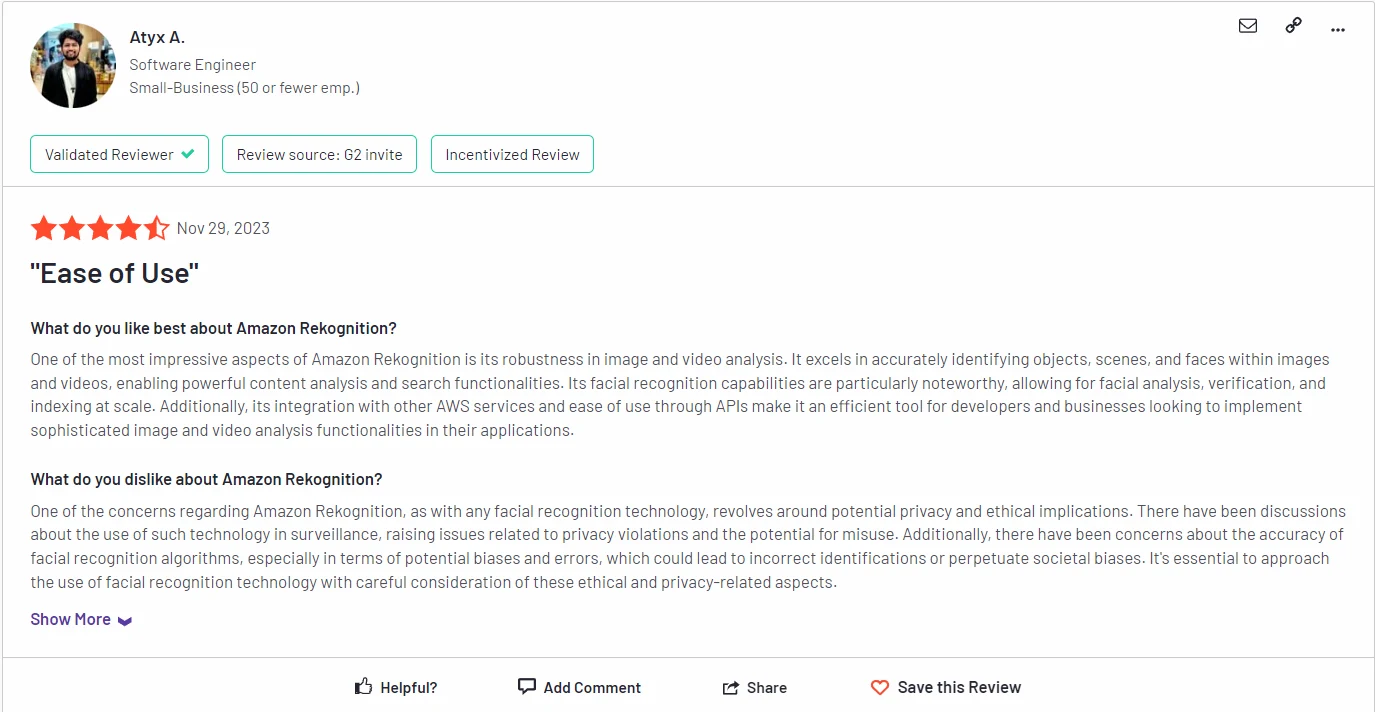
G2 Review : 4.3/5 (link to customer reviews)
5. Imagga

Imagga is a powerful image recognition tool that uses advanced technologies to analyze and understand the content within images.
It's a versatile tool with a wide range of practical applications.
The core of Imagga's functioning relies on deep learning and neural networks, which are advanced algorithms inspired by the human brain.
These algorithms enable computers to learn and recognize new visual patterns, objects, and features.
When you give Imagga an image, it figures out what's in it. It starts by breaking down the image into tiny data points called pixels.
It carefully examines each pixel's color, position, and intensity, creating a digital version of the image as a foundation for further analysis.
One of Imagga's strengths is feature extraction, where it identifies visual details like shapes, textures, and colors.
It can recognize specific patterns and deduce boundaries and shapes, such as the wing of a bird or the texture of a beach.
Imagga's standout feature is its versatility. It uses various methods, including deep learning and neural networks, to handle all kinds of images.
Key Features:
- Image Tagging
- Customizable Models
- Scalability
- API Integration
Pros:
- Efficiency
Imagga significantly boosts content management efficiency in collaborative projects by automating image tagging and organization.
- Customization
Users can create custom recognition models tailored to their project requirements, ensuring precise image analysis.
- Scalability
Imagga is versatile and can adapt to the needs of various projects, making it a suitable choice for different collaborative efforts.
- Integration
The software easily integrates with various project management and content organization tools, streamlining collaboration.
Cons:
- Technical Expertise
Achieving complex customizations may require technical expertise, which could be challenging for users with limited technical skills.
- Internet Dependency
Imagga relies on a stable internet connection, which might pose challenges in areas with unreliable connectivity during collaborative projects.
- Data Security
While Imagga provides encryption and authentication features, additional security measures may be necessary to protect sensitive information in collaborative projects.
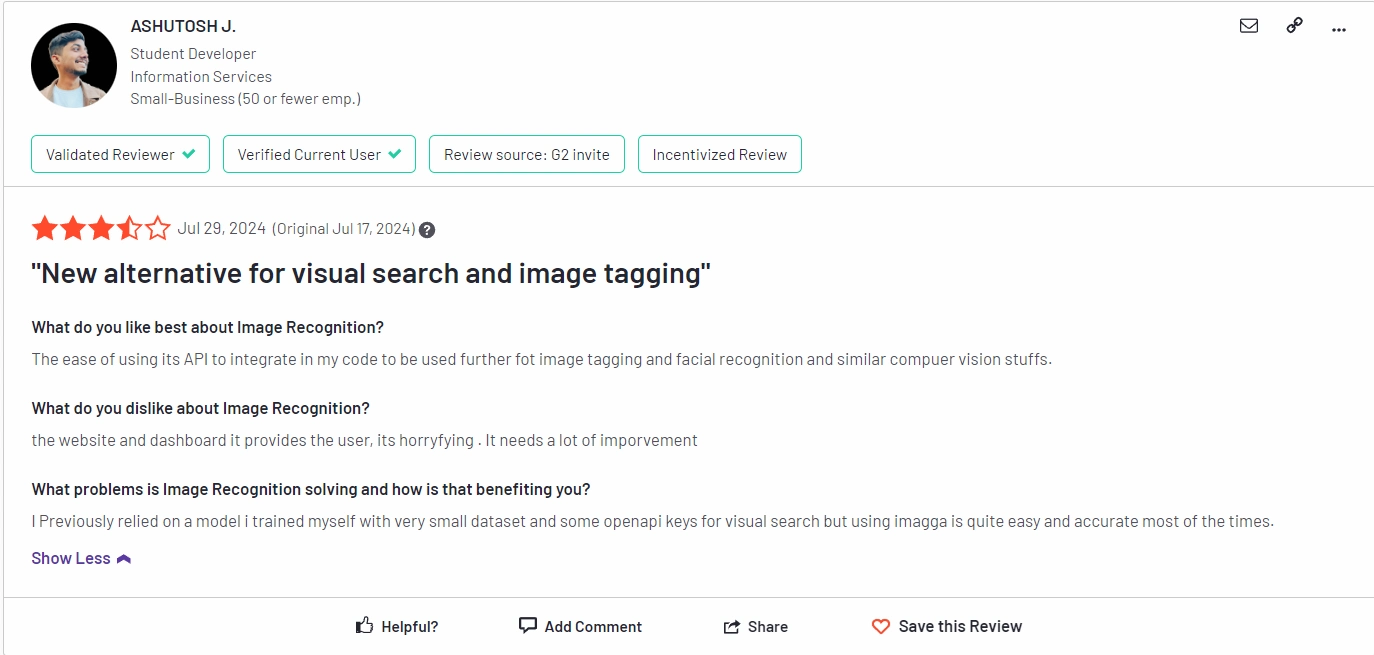
G2 Review : 3.5/5 (link to customer reviews).
Pricing
You can check the pricing details here.
6. Clarifai
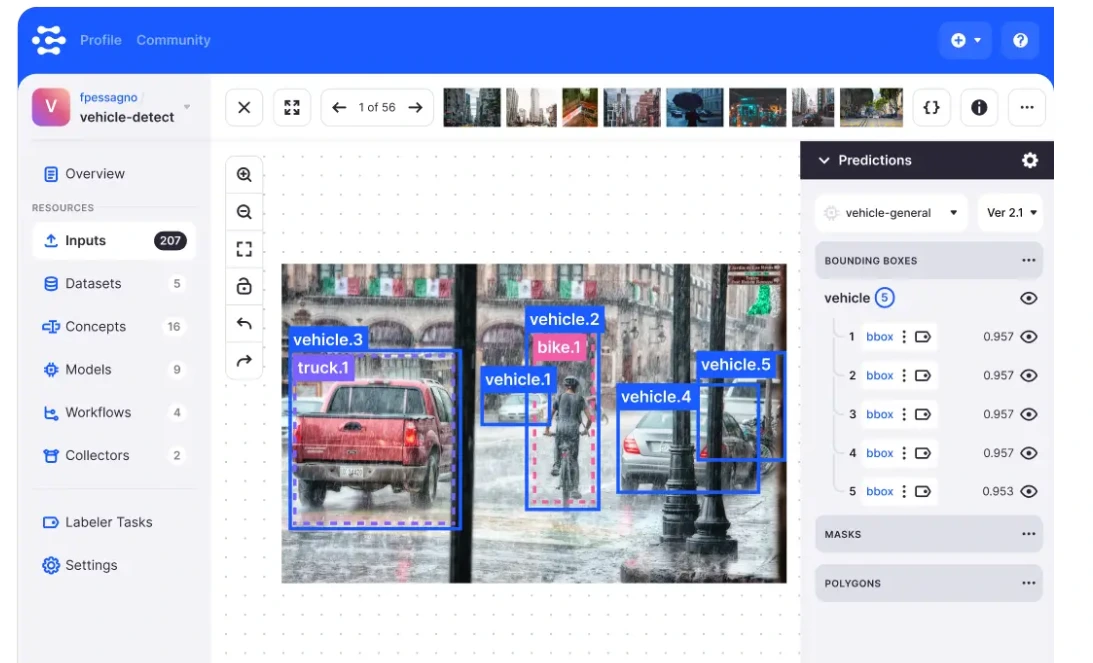
Clarifai is an impressive image recognition tool that uses advanced technologies to understand the content within images, making it a valuable asset for various applications.
What makes Clarifai stand out is its use of deep learning and neural networks, which are complex algorithms inspired by the human brain.
These algorithms allow the software to "learn" and recognize patterns, objects, and features within images.
When you feed a picture into Clarifai, it goes through the process of analysis and understanding.
The image is first converted into tiny squares called pixels, considering the color, location, and intensity of each pixel to create a digital format. This step is crucial for the subsequent ones.
Clarifai excels at feature extraction, singling out unique features like contours, textures, and colors in the image.
It can also detect boundaries and outlines of objects, recognizing patterns characteristic of specific elements, such as the shape of leaves on a tree or the texture of a sandy beach.
A notable feature of Clarifai is its continuous learning process.
Through extensive training on datasets, it improves its recognition capabilities, allowing it to identify a wide array of objects, scenes, and features.
The more data it encounters, the better it becomes at understanding image content.
Key Features:
- Custom Training
Clarifai allows users to train models for specific image recognition tasks, creating customized models for identifying objects or concepts relevant to their projects.
- Predictive Analysis
The software offers predictive image analysis, providing insights into image content and characteristics, which is valuable for categorization and content recommendations.
- Scalability
Clarifai is scalable, catering to the image recognition needs of both small businesses and large enterprises.
Pros:
- Ease of Use
Clarifai provides user-friendly interfaces and APIs, making it accessible to developers and non-technical users.
- Accuracy
The software boasts high accuracy in image recognition, especially with custom-trained models, ensuring reliable results for various applications.
- Versatility
Clarifai's custom training feature allows users to adapt the software for specific use cases, making it a flexible solution for diverse industries.
Cons:
- Cost
The pricing structure may be a consideration, particularly for high-volume or continuous usage.
Users should assess costs based on their specific needs.
- Training Complexity
While custom training is a powerful feature, it can be complex and time-consuming, requiring expertise in machine learning.
- Data Privacy
Like any image recognition software, users should be mindful of data privacy and compliance with regulations when working with sensitive content.
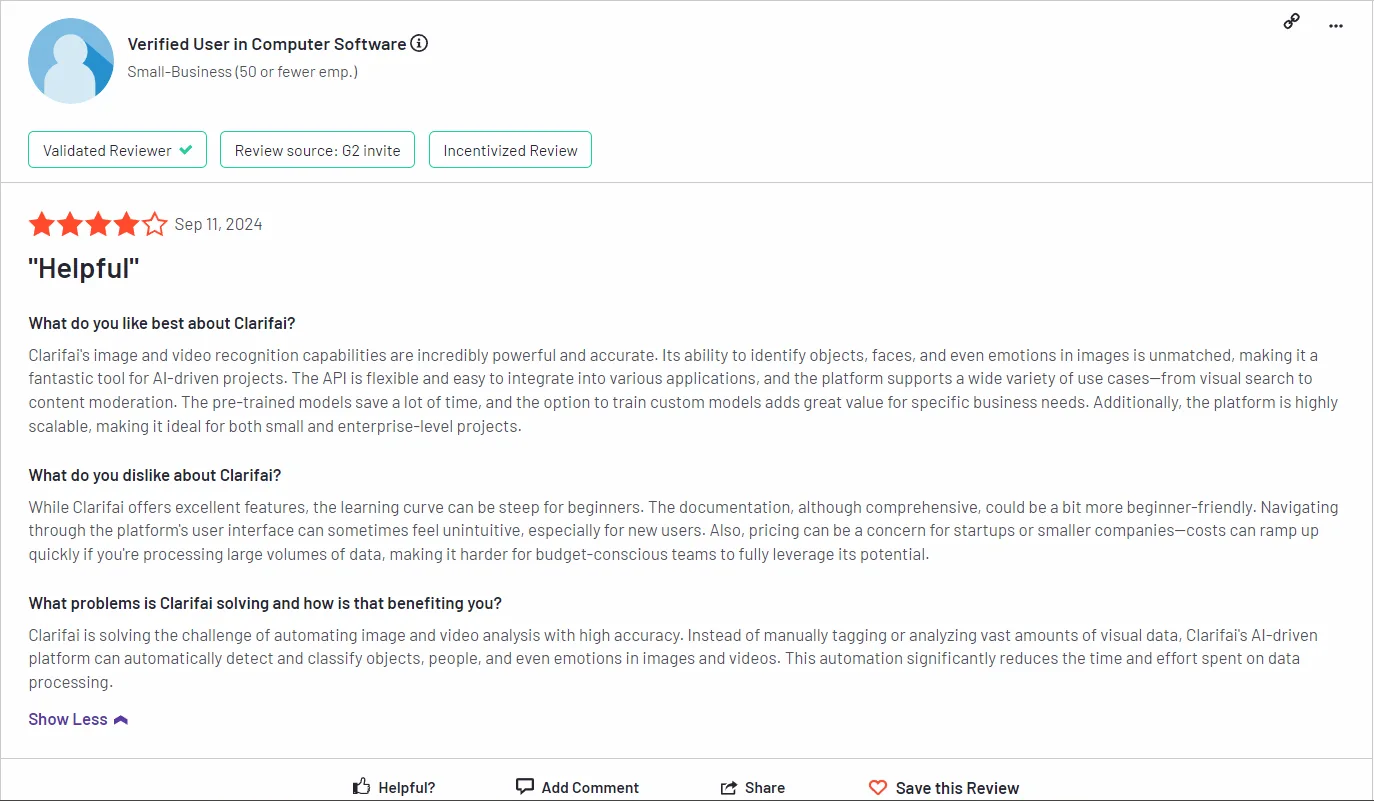
G2 Review : 4.3/5 (link to customer reviews).
Pricing
It has 3 tiers of pricing:
- Community -> Free forever
- Essential -> $30 per month
- Professional -> $300 per month
For more detailed pricing you can explore the official site here.
7. Azure AI Vision

Azure AI Vision is an image recognition tool by Microsoft.
It is like having a smart detective for images, delving into their depths and understanding them much like humans do.
When you feed an image into Azure AI Vision, its artificial intelligence systems work, breaking down the picture pixel by pixel to comprehend its meaning.
The AI tries to understand what it sees by identifying patterns and recognizing things by their names, shapes, and colors.
MS Azure AI has undergone extensive training on diverse datasets, enabling it to recognize a wide range of objects, scenes, and even text—whether it's printed or handwritten.
The learning process is continuous, ensuring that the software consistently enhances its ability to recognize and understand visual content.
Azure AI Vision stands out for its adaptability. It doesn't impose strict rules but instead adjusts to the specific characteristics of each image it encounters.
This flexibility makes it a versatile tool suitable for various industries and purposes.
Key Features:
- Advanced Image Analysis
- Versatility
- Integration with Azure Services
Pros:
- Accuracy and Precision
The tool excels in accurately recognizing objects and text within images, even capturing subtle details, making it valuable in fields like medical imaging.
- Efficiency and Automation
It speeds up tasks involving sorting, categorizing, and extracting information from images. For instance, in the e-commerce industry, it can automate product catalog and enhance customer search experiences.
- Scalability
Being cloud-based, Azure AI Vision can handle large amounts of image data, making it suitable for both small businesses and large enterprises.
Cons:
- Cost Considerations
While highly effective, the cost may be a concern for small businesses with limited budgets, particularly when dealing with large volumes of images.
- Complexity for Beginners
Implementation may pose a learning curve for those new to cloud-based services and AI technologies.
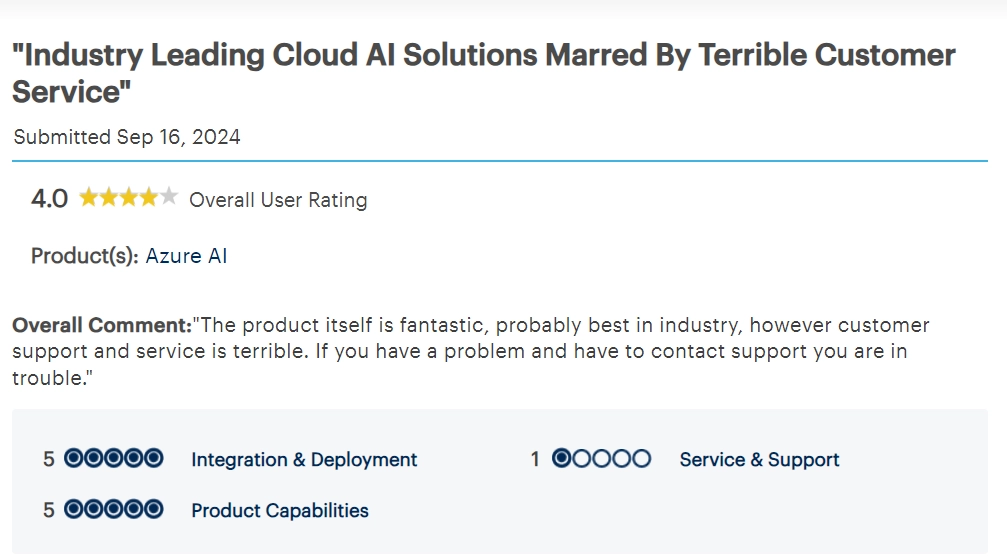
Gartner Review : 4.5/5 (link to customer reviews).
Pricing
You can check the detailed pricing here.
Conclusion
Image recognition tools have become integral in our tech-driven world, with applications ranging from facial recognition to content moderation.
Each tool mentioned offers unique features and capabilities.
These tools, powered by advanced technologies like machine learning and neural networks, break down images into pixels, learning and recognizing patterns to provide meaningful insights.
While they enhance efficiency and automation in various industries, you should consider factors like cost, complexity, and data privacy when choosing the right tool for their specific needs.
Embracing these image recognition tools opens up exciting possibilities for understanding and utilizing visual data in innovative ways.
Frequently Asked Questions
1. How to choose the best image recognition software?
Choosing the best image recognition software involves considering factors like accuracy, customization, scalability, and integration capabilities.
Evaluate the specific features offered by each tool, such as facial recognition, object detection, and text extraction, to ensure they align with your project requirements.
Additionally, consider the software's ease of use, cost structure, and security features.
It's crucial to select a tool that not only meets your immediate needs but also provides room for future scalability and integration with other systems.
Conducting trials and assessing user feedback can also aid in making an informed decision based on the software's performance and user experience.
2. Do image recognition models need to be trained?
Yes, image recognition models need to be trained to accurately identify and categorize objects within images.
During the training process, the model is exposed to a large dataset containing labeled images, allowing it to learn and recognize patterns, features, and relationships.
This training enables the model to generalize its understanding and improve its ability to identify new, unseen images accurately.
The quality and diversity of the training dataset play a crucial role in the model's performance, and continuous training may be necessary to enhance its accuracy over time and adapt to evolving data patterns.
3. What is Ai image recognition software?
AI image recognition software, also known as computer vision software, is a type of application that utilizes artificial intelligence (AI) and machine learning algorithms to analyze and interpret the content within images or videos.
These software systems can identify and categorize objects, scenes, patterns, text, and even activities within digital visual data.
The underlying AI technology enables the software to learn from large datasets, recognize visual patterns, and make predictions or classifications based on the information extracted from images.
Image recognition software finds applications in various fields, including security, healthcare, e-commerce, and more, where automated analysis of visual content is valuable.

Simplify Your Data Annotation Workflow With Proven Strategies
.png)


